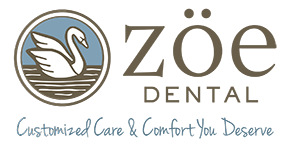5 Socially Acceptable Ways to Clean Your Teeth During the Day
The American Dental Association (ADA) recommends dental cleanings twice a year. No problem; you’re on board with that. The ADA also recommends that you brush your teeth twice a day and floss once a day. That’s fine too, but what about the rest of the day?
There are times during the day when your teeth feel dirty — for example, after your morning coffee, before a big meeting, after lunch or before an important date. How can you cope without seeming neurotic or insecure? Don’t worry; cleaning your teeth during the day just got easier if you follow these five socially acceptable tricks.
1. Floss in the Restroom
Let’s start with the obvious. Containers of dental floss are small enough to conceal in your pocket or purse. You can store it in your desk drawer, too. After eating — whether you have donuts, lunch or an afternoon candy bar — surreptitiously sneak your floss into the restroom for a quick flossing. No one will be the wiser, and your teeth will thank you.
Flossing frees any food caught between your teeth, which can be both unsightly and unhealthy. If you use mint dental floss, you’ll freshen your mouth as well. Flossing after you eat during the day is almost as effective as routine dental cleanings. Excess flossing will not hurt your gums, as long as you’re not overly aggressive with the floss.
2. Rinse with Water
You may have the best intentions when it comes to dental cleanings, but unless you’re a fanatic about brushing, you likely don’t carry a toothbrush everywhere. If you’re caught without it, clean your teeth as best you can with a glass of water and your tongue.
Swish the water vigorously around your mouth. If you’re in the restroom, you can spit out the water into the sink. If you’re still at the table, please swallow the water, even if you’re dining alone. The water will help clean your teeth, and if it’s fluoridated water, you’ll give yourself a quickie fluoride dental cleaning.
3. Chew Gum
This tip may seem counterproductive, but gum that contains cinnamon (cinnamic aldehyde, the ingredient that produces the cinnamon taste) actually reduces bacteria. We recommend sugar-free gum with xylitol, a sugar substitute that has cavity-fighting properties. If you can’t find a cinnamon-flavored sugar-free gum with xylitol, look for gum with one or the other.
If you can’t find any gum, chewing on a cinnamon stick can have the same effect in your mouth. Of course, it may be unlikely that you’ll find a stick of cinnamon if you are someplace without a stick of gum. But if you’re at a restaurant, ask the server for one (and then tip big if it’s brought to you).
4. Drink Tea
Tea contains flavonoids that impart health benefits, including dental health. As the tea washes over your teeth, the flavonoids get into all the nooks and crannies that even your toothbrush can miss. Once there, they prevent certain bacteria from adhering to your teeth and gums.
We recommend unsweetened tea, of course. Another benefit is that the flavonoids stop sugar from forming in your mouth, which fights the development of cavities. And if the tea is caffeinated, it will give you the post-meal boost you might need.
5. Snack Smarter
Everyone snacks. But to make your next dental cleaning easier, cut down on the sweet stuff. That chocolate bar may give you some energy, but it can cause your teeth to decay faster, especially if you don’t brush immediately after you eat it. Instead, snack on hard fruit, like apples. Apples are dense enough to help scrape other food residue off your teeth.
Also, eating a full meal stimulates the production of saliva, and saliva fights bacteria build-up and washes away food particles. When you snack, however, you tend to salivate less, so more food particles and bacteria stay on your teeth. After snacking, see the other tips.
—The Zöe Dental Team
